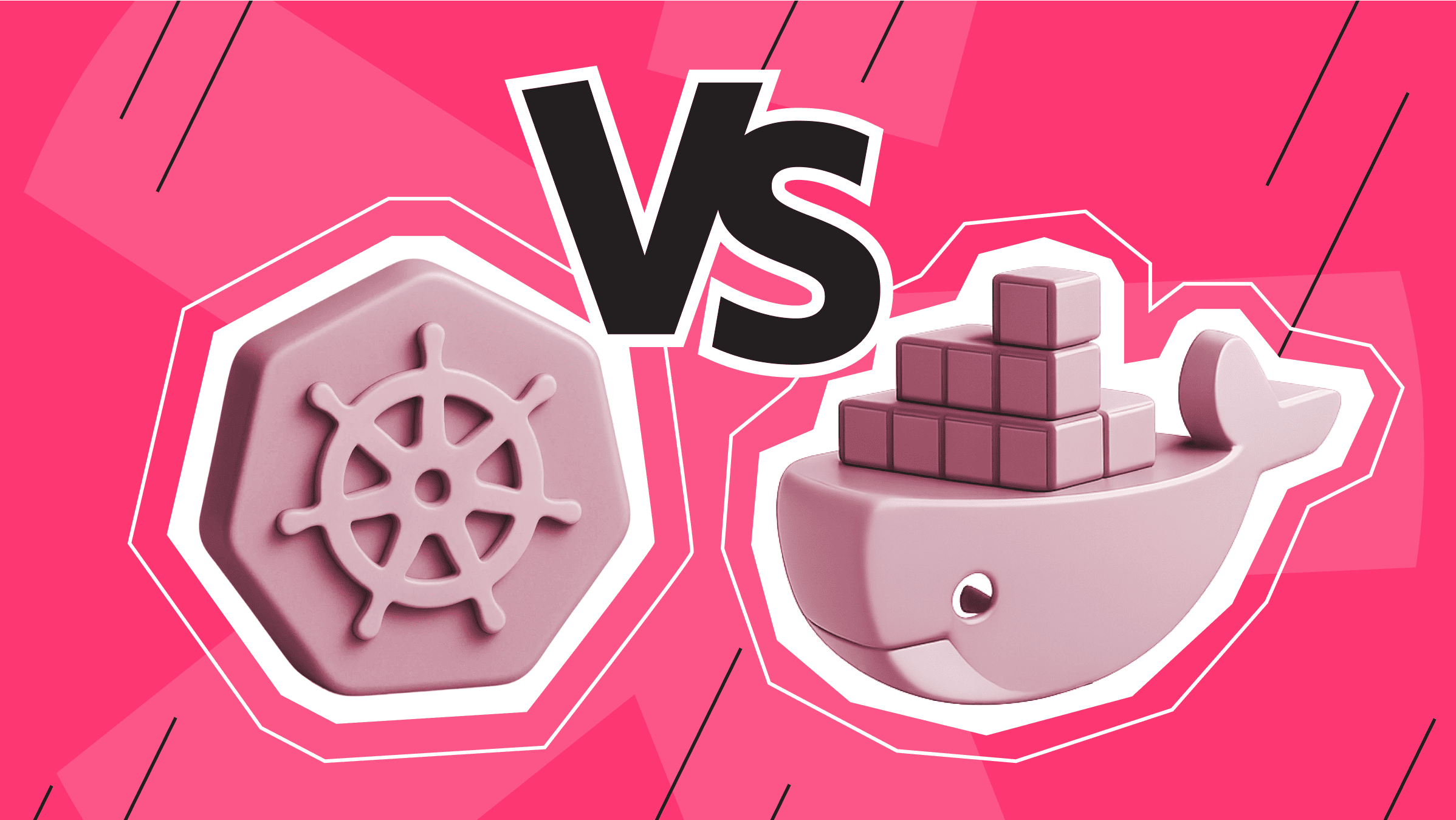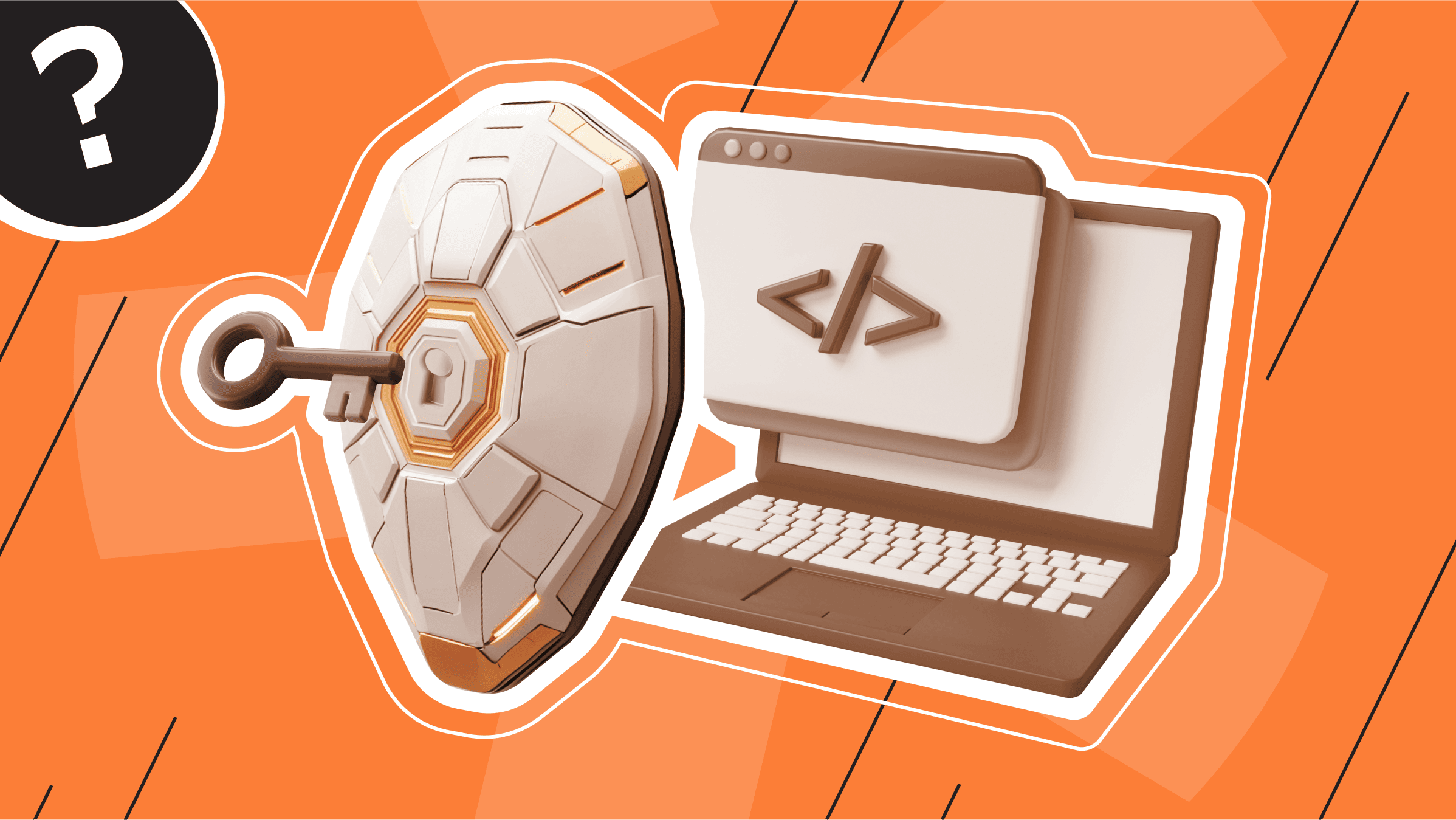
Securing modern infrastructure requires the right tools. Docker and Kubernetes have transformed how applications are deployed, but they also introduce new security challenges. While both technologies focus on containerized environments, their security approaches differ.
What approach offers better security for your server infrastructure? Docker or Kubernetes? The answer isn’t straightforward. Docker's ability to build secure container isolation reflects its strengths, while Kubernetes offers cluster-level security management solutions. Every server needs the right security solution, so understanding how each container technology performs will help you select the optimal option.
Let’s break down Docker vs Kubernetes server security solutions. The assessment demonstrates a comparison of different security aspects between containers, including isolation and management of vulnerabilities as well as network access permissions.
Docker vs Kubernetes: Container Isolation
The protection of server security relies heavily on proper isolation within containers. Separate application execution within the design protects detached containers from jeopardizing other containers. Docker implements isolation in a different manner than Kubernetes, while maintaining security isolation features for both solutions.
Docker: Standard Container Security
The process-level isolation in Docker occurs through namespaces and cgroups implementation. The system resources within namespaces exist separately from each other, but cgroups function to set resource boundaries. The design structure blocks containers from undermining other containers.
However, Docker has security gaps. A security flaw emerges when containers operate under root privileges because attackers gain total control of the system. Implementing user namespaces together with security profiles helps lower security exposure.
Example: Running a Docker container with restricted privileges
docker run --rm -u 1001 --security-opt no-new-privileges my_secure_image
The command enables a non-root user to run the container, which reduces possible security threats.
Kubernetes: Enhanced Isolation with Pod Security Policies
The grouping mechanism within Kubernetes enables better container isolation by organizing containers into pods. Kubernetes provides administrators with Pod Security Policies (PSPs) along with Seccomp profiles for implementing security rules, whereas Docker does not have comparable features.
The root access restraint applies through PSPs to specific containers.
apiVersion: policy/v1beta1kind: PodSecurityPolicymetadata:name: restrictedspec:privileged: falserunAsUser:rule: MustRunAsNonRoot
This policy ensures that all containers in a pod run as non-root, reducing the risk of attacks.
Additionally, Kubernetes namespaces isolate workloads at a higher level. This helps to separate applications and prevent unauthorized access.
Basic isolation is provided by Docker, but security requires an appropriate setup. By using network rules and pod security policies, Kubernetes provides more robust controls. Kubernetes is the safer option if you require improved container security. However, it necessitates additional management and setup.
Vulnerability Management and Updates

The images used by servers exhibit security weaknesses that render them susceptible to attack. A system of continuous updates, installation, and equipment vulnerability detection forms the basis for Docker and Kubernetes security protocols. Each platform handles its upgrade process at its own pace, which determines the speed of danger reduction.
Docker: Image Vulnerability Scanning and Manual Updates
Docker allows users to scan container images for security flaws. The Docker Scout and Trivy tools help detect outdated packages and known vulnerabilities.
For example, you can scan an image for Docker security vulnerabilities using Trivy:
trivy image your-docker-image:tag
Using the above command, users can obtain detailed information about any vulnerabilities detected within the image.
Operators must perform hand-driven updates for Docker containers. The redeployment process requires operators to build updated images first. Extensive operating environments require an extended amount of time when this process is executed.
The following best practices represent a framework for Docker Security implementation:
- Docker security is enhanced through the use of base images sourced from established official suppliers.
- Security updates must lead to image scans and rebuilds on a regular basis.
- Occupy fewer privileges in containers because this approach lowers the possibility of attacks.
Kubernetes: Automated Rolling Updates
Through its automatic rollout system, Kubernetes enables very efficient software updates. The system performs a gradual replacement of old containers by new ones whenever new image versions become available. Clever system management allows running operations without interruptions, which keeps the system performing optimally while updates take place.
A deployment through rolling updates operates as shown in the following example:
apiVersion: apps/v1 kind: Deployment metadata: name: my-app spec: replicas: 3 strategy: type: RollingUpdate rollingUpdate: maxUnavailable: 1 maxSurge: 1 template: spec: containers: - name: my-app image: your-docker-image:new-tag
Using this configuration, your application remains online because it updates one pod at a time.
The Kubernetes system works with vulnerability scanners such as Anchor and Kube-bench. The identified tools scan your cluster to detect potential risks, thus simplifying security maintenance.
Several security strategies exist for the Kubernetes system, including the following:
- Implement immutable images to block unauthorized modifications to your system.
- System administrators should enable admission controllers that detect and block unauthorized containers.
- Security updates should be automated with the help of rolling deployment features and dedicated patch management systems.
Docker vs Kubernetes: Network Traffic Control

Network traffic control delivers essential protection for server systems. Security breaches occur through open ports together with misconfigured networks when attackers attempt unauthorized entry. Kubernetes security tools function through separate mechanisms from Docker container security features.
Docker: Network Restrictions at Container Level
The Docker Engine controls the networks that enable Docker containers to communicate with each other. A regular container setup employs a bridge network that lets containers communicate with each other while keeping them separate from the host system.
A more secure deployment through Docker is possible with customizable network setups as well as firewall configurations.
Docker can create isolated networks by following these steps:
docker network create --driver bridge my-isolated-network
This ensures containers on my-isolated-network can only communicate with each other.
Docker does not have built-in network policies. Users must configure iptables or external tools like Traefik for advanced security.
Kubernetes: Network Policies and CNI for Traffic Control
The Kubernetes Network Policies operate as a solution that controls how pods communicate with each other. Kubernetes implements detailed access controls for pod communications through its mechanisms, which exceed Docker's system approach to network management.
Example: Denying all external traffic to a Kubernetes pod
apiVersion: networking.k8s.io/v1kind: NetworkPolicymetadata:name: deny-externalspec:podSelector: {}policyTypes:- Ingress
This policy blocks incoming traffic unless explicitly allowed.
Kubernetes also integrates Container Network Interface (CNI) plugins like Calico and Cilium to establish encrypted network communications while enabling micro-segmentation capabilities.
The debate lies in identifying which software offers better protection for users. Security within Docker needs manual configuration after implementing the fundamental network protection features.
The Kubernetes platform achieves better security through its Network Policies and CNI plugin functionalities. The choice between Kubernetes and Docker depends on strict traffic needs since Kubernetes provides superior control.
Access Control and Privilege Management

Controlling access is critical for server security. If attackers gain high-level privileges, they can modify or delete containers. Docker vs Kubernetes have different ways of managing user permissions and restricting access.
Docker: User Privileges and Security Profiles
Docker containers perform their operations with the root administrative privileges activated by default. Once attackers discover a system vulnerability, they could immediately gain root control over the entire host server.
Users can eliminate the threat by using Docker to generate non-root containers.
Example: Running a container with a non-root user
FROM alpineRUN adduser -D myuserUSER myuserCMD ["sh"]
This setup prevents containers from performing privileged actions.
AppArmor and Seccomp profiles serve as built-in protection capabilities available to Docker users. From a security perspective, these tools offer users control mechanisms that restrict a container's actions by blocking specific system calls or file access.
The implementation of Seccomp profiles appears as shown in this example:
docker run --security-opt seccomp=profile.json my-image
This applies custom security restrictions defined in profile.json.
While these features are useful, Docker’s access control is mostly manual. It’s up to you to configure and enforce these settings. Also, you can secure your Docker by:
- Avoid running containers as root.
- Using Seccomp and AppArmor for added restrictions.
- Applying least privilege principles to container users.
Dedicated Server
This ideal solution for large-scale projects offers unbeatable protection, high performance, and flexible settings.
Kubernetes: Role-Based Access Control (RBAC)
The RBAC function within Kubernetes enables administrators to specify user permissions through role-based access control. Kubernetes differs from Docker in that it can secure all cluster areas by controlling permissions throughout the whole system, while Docker focuses its security on the container level.
RBAC implements roles and role bindings as tools to regulate the abilities of users and services.
Example: Creating a read-only role for Kubernetes resources
apiVersion: rbac.authorization.k8s.io/v1kind: Rolemetadata:name: read-onlyrules:- apiGroups: [""]resources: ["pods"]verbs: ["get", "list"]
This role allows users to view pods but prevents them from modifying anything. Also, here are the Kubernetes security best practices:
- Use RBAC to limit permissions.
- Apply the least privilege access to users and applications.
- Regularly audit role assignments to prevent privilege misuse.
Docker provides basic privilege control, but securing it requires manual steps. Kubernetes enforces strict access rules for RBAC and service accounts, offering better protection if security is a priority.
Docker vs Kubernetes: Attack Scenarios and Security Best Practices

The efficiency gained by using containers creates new security threats for system networks. Cyber attackers find entry points through poorly configured systems, insufficient access control protocols, and outdated program images. Security measures must be applied proactively to protect Docker vs Kubernetes against different attack vectors.
Namespace Escape Attacks
Containers should be isolated, but flaws in the runtime can let attackers break out and gain access to the host system.
- Docker Risk: An attacker can escalate privileges and control the server if a container runs as root.
- Kubernetes Risk: Poorly configured pods with elevated privileges can allow lateral movement inside the cluster.
How to prevent it:
- It is essential to execute all container processes from a user account different from root authentication.
- System calls must be limited through the use of Seccomp, AppArmor, or SELinux.
- The secure configuration of Kubernetes Pod Security Policies should block all privileged container runs.
Image Spoofing and Supply Chain Security
Malicious code can be added by attackers to container images. This occurs when businesses neglect to scan photographs or take them from unreliable sources.
- Docker Risk: Malware or backdoors could be present if an image is run from an unknown registry.
- Kubernetes Risk: Images that are compromised may propagate throughout the cluster.
Here is how to prevent it:
- Use AWS ECR, Google Artifact Registry, Docker Hub, and a few other official registry platforms.
- For the purpose of verifying image signatures, the Docker Content Trust feature ought to be kept active.
- Images that are out-of-date or improperly signed are blocked by the Kubernetes Admission Controllers.
Best Practices for Securing Containers
These general security practices apply across Docker vs Kubernetes operations:
For Docker:
- It is essential to execute all container operations through a non-root authorized user.
- The container resource usage can be controlled through the specification of both --memory and --CPUs options.
- Regular updates must be applied to Docker software alongside the container image collection.
For Kubernetes:
- Implement RBAC by enabling Role-Based Access Control to control user system permissions.
- Network Policies must be enabled to control communication between pods to meet their essential requirements.
- Monitoring for suspicious activity can be conducted through the use of Falco and Kube-bench tools.
Both Docker and Kubernetes require strong security policies. Misconfigurations can expose an entire system to attacks.
Summary on Docker vs Kubernetes: Security Comparison
The security capabilities in both Docker and Kubernetes function differently from one another since they handle unique tasks. The Docker platform deals with container management, but Kubernetes brings together container management with orchestration functions alongside improved security safeguards.

Conclusion
Modern server security heavily depends on the services provided by Docker and Kubernetes. The Docker platform enables user-friendly containerization yet exposes security holes that require complementary tools and setup configurations. The security control framework in Kubernetes is stronger than Docker, especially when managing enormous container deployments.
Best practices must be followed to enhance the security status. Security practices include scanning container images regularly, implementing least privilege control measures, and establishing networking rules to regulate container-to-container traffic. Kubernetes container security features consist of RBAC along with Pod Security Policies and automatic updates that decrease exposure to risks.
Your needs will determine the choice between these options. Using Docker will work best for basic container setup requirements, but Kubernetes provides better security capabilities for comprehensive, large-scale deployments. Achieving server environmental security takes precedence over everything else, regardless of the platform you deploy.
Dedicated Server
Reliable operation, high performance, and everything you need to host containers — get started now.
From $70.00/mo
![How to Deploy and Run Docker Containers Efficiently [Guide]](https://blog.ishosting.com/hubfs/blog/docker-container-deployment/docker-container-deployment%20.png)
